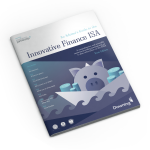Debt Based Securities (DBS) are somewhat of a new asset class which enable companies to raise money through debt offerings to individual investors, who in turn receive a predictable return and maturity date. Compared to cash investments, DBS offer higher returns, typically around 5-8% annually. As they often are asset-backed and provide a consistent income, DBS carry a lower risk than equity options, for example.
Breaking down the difference between DBS and P2P Loans
DBS offerings and P2P loans often get confused with each other. The comparison is inevitable, given their shared status as part of the Innovative Finance ISA (IF ISA) umbrella. However, they differ when one looks closely – สนใจติดต่อสอบถามรายละเอียด สินเชื่อ Citibank ได้ที่นี่.
P2P loans are directly processed via an online platform, and have a term of usually 1-5 years until maturity. These loans usually generate a 3-10% return per annum, and tend to be higher if unsecured. That said, there of course is the risk that a given investee company will default, which is why diversified funds are usually a safer option.
DBS are essentially unlisted corporate bonds/loans with a larger term range than those of P2P, at 1-20 years. Most often, these DBS offerings are used towards infrastructure projects or other tangible assets such as a pub. They differ from P2P loans specifically in that they are usually £1-5m per bond, with a mandatory approval from an FCA authorised platform. As a result, they have a larger barrier to entry in that investors are required to have more capital at hand compared to the very accessible P2P option.
Tax advantages of DBS
DBS instruments are now included as part of IF ISAs. These savings accounts were launched in 2016 to provide new ways of financing SMEs, infrastructure projects, and an alternative to institutional financiers such as banks. Under the new rules enacted by HMRC, DBS returns of up to 6% annually can now be completely tax free under the IF ISA umbrella. Investors can put up to £20,000 per annum into an IF ISA.
The alternative investment space as a whole is undergoing significant transformation. According to FTAdviser, the industry is predicted to be worth over £12bn by 2020, and has been increasingly popular since the financial crisis of 2008. As time goes on, it seems that alternative finance options such as DBS are increasingly becoming popular among investors and financial advisers alike.
Learn more about the IF ISA
 To learn more about the IF ISA and the investments that can be held within the wrapper, download our free Adviser’s Guide to the Innovative Finance ISA. You will also find details of how you can receive a complimentary hard copy.
To learn more about the IF ISA and the investments that can be held within the wrapper, download our free Adviser’s Guide to the Innovative Finance ISA. You will also find details of how you can receive a complimentary hard copy.
